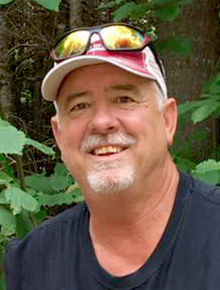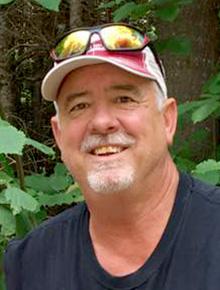
Which way is the wind going to blow today?
There is little doubt why southwest Minnesota is covered up with wind towers.
Worthington has been the site for the National Wind Surfing Regatta several times over the past 10 years with Lake Okabena, considered the second windiest place over water in the state, right in the town of Worthington.
Almost everything I do in April and May is affected by the wind. From about April 1 until the deadline of May 15, we are doing prescribed burns. This is the burning of grassland areas for the benefit of native grass species.
Folks often wonder why this takes place in the spring when ground-nesting birds like pheasants and other waterfowl are nesting. It is a great question and one I get asked often.
Burning in the spring has a date cutoff of May 15. This is the date when wildlife professionals determine that nesting is actively underway.
Not all birds do the same thing at the same time. Some start their nesting efforts earlier and others are latecomers and nest into early summer.
Native grass species, the kind you will most likely see in public Wildlife Management Areas, are primarily made up of warm-species grasses. These grasses don’t really get started growing in earnest until about June 15. Invasive cool-season grasses like smooth brome are the ones that green up first every spring, and you can see it when the road ditches are bright green when other grasses are still completely brown.
Because cool-season grasses start much earlier every year, they can often out-compete their later-growing, warm-season species. If left completely un-attended, a great stand of warm-season grasses can completely disappear in as little as 10 years. A parcel of great wildlife habitat which has lots of diversity and stands up to our tough winters, thus providing great winter habitat for birds, can be degraded to invasive cool-season broghm in a very short time.
By time we do a prescribed burning in the spring, many of these cool-season grasses will be growing vibrantly. A fire in the spring singes these undesirable cool-season grasses and sets them back on their heels for a short time. After the burn, the ground is black and absorbs the sun’s rays. This heats up the soil temperatures very quickly, stimulating the warm-season varieties and allowing them to start growing sooner. This can actually give the desirable grasses about 30-45 days longer growing season. This is why the vegetation is so responsive. A stand of native grasses that reached 3 feet in height the prior year can reach 6-8 feet in height by fall if they were subject to burn in April or May.
The vibrant warm-season grasses now have the opportunity to outcompete the undesirable cool-season brome.
Fire to prairies and other native grass stands is exactly like fertilizing your lawn grass in the back yard. We all know the homeowner who fertilizes regularly has the nicest-looking lawn. The best part about a spring fire is you get the same results and there is no fertilizer to run into a neighboring lake or stream, thus deteriorating water quality.
So, back to the question about burning up pheasant nests. Prescribed burning in the spring does burn up a few nests, but in most cases, a very limited number. I do a drive around after all of the smoke has cleared and look for active nests. Sometimes I find zero and other times maybe a half dozen.
Prescribed fire usually affects about one-fourth to one-half of the parcel. Hens that lose a nest will just move to the unburned portion of the property and re-nest again. Hens have been known to re-attempt nesting up to four or five different times. This can happen when a burn is completed or when a nest predator eats the eggs before they hatch. Re-nesting is not an uncommon event.
In the end the saying goes like this. Endure a short-term pain to achieve a long-term gain. The wildlife carrying capacity and nesting success of great habitat is much higher than the success from nesting attempts in marginal cover.
The additional game production lasts for six to seven years before a burn is necessary again. These years of much higher production far more than offset the slight losses in production in the year the burn took place.
The key here is understanding prairie and grassland biology. Lightning used to start fires on the prairie all the time. It was this natural fire source with no human interference that managed and maintained our robust prairie ecosystems for over 10,000 years.
Spring burning is just the small scale current human attempt to do what nature did all by itself since before man walked upright.
Scott Rall, Worthington, is a habitat conservationist, avid hunting and fishing enthusiast and is president of Nobles County Pheasants Forever. He can be reached at scottarall@gmail.com.



